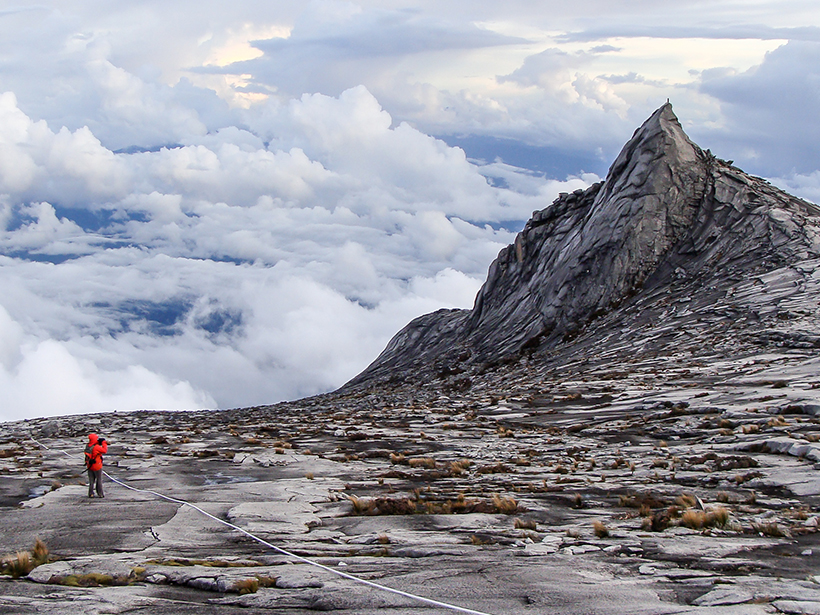It didn’t exactly crack open the world, the presentation Princeton University’s Jason Morgan gave at AGU’s Spring Meeting in Washington, D.C., in April 1967. However, Morgan’s research leading up to the meeting had proved there were, in fact, cracks in the world.
The ideas were too new, too different from anything which had been done.
“It seems extraordinary that, in this hall packed with the best geophysicists and geologists in the United States, nobody got excited or even interested by the implications of Morgan’s ideas. They were too new, too different from anything which had been done,” wrote Xavier Le Pichon in the journal Tectonophysics in 1990, when he aimed to “reconstruct what happened during those exciting six months.”
Morgan had, of course, proved the theory of plate tectonics through seafloor spreading measurements. “The evidence presented here favors the existence of large ‘rigid’ blocks of crust” that explained continental drift, he wrote in the conclusion of his landmark paper, “Rises, Trenches, Great Faults, and Crustal Blocks,” published in March 1968 in AGU’s Journal of Geophysical Research. (Morgan’s paper, held up in peer review, came several months after Nature published similar results from Dan McKenzie and Robert Parker, who were largely credited as the first scientists to verify plate tectonics. Le Pichon eventually found a copy of the outline Morgan had scrambled to finish the night before his 1967 talk—neither Morgan nor several colleagues had retained their copies. The document showed that Morgan should be credited for the feat.)
For AGU’s Centennial, this month in Eos we’re celebrating all the scientists who have been fascinated by the idea, since it was first proposed by Alfred Wegener in 1912, that the continents shift underneath our feet, constantly reshaping the planet.
The granite mountain formed when magma rising from the active subduction zone below squeezed between two rock strata and then cooled rapidly due to mechanisms still not entirely understood.
Our cover story features scientists studying striking formations in Borneo. Mount Kinabalu in the Malaysian state of Sabah is a spectacular example of plate tectonics at work. The granite mountain formed when magma rising from the active subduction zone below squeezed between two rock strata and then cooled rapidly—due to mechanisms still not entirely understood—about 7 million years ago. Several other strange landforms nearby were also created around this time, and then, about 5 million years ago, the subduction underneath Sabah just…stopped. The scientists, as they write, want “to understand why subduction ceased and how the landforms of Sabah may be related to deeper processes in the mantle.”
Some of our biggest questions about tectonics and seismic hazards could be answered if scientists could better understand the Alaska Peninsula subduction zone. Read about a large group of researchers who launched the Alaska Amphibious Community Seismic Experiment in May 2018, deploying a huge array of seismometers that stretch from onshore far out into the water, using innovative ocean bottom seismometers that work together to take integrated observations. The group collected their instruments in August and are making the data freely available as quickly as they are recovered.
What’s next for the field of tectonics? We might ask Jacqueline Austermann of Columbia University. AGU’s Tectonophysics section recently honored her with its Jason Morgan Early Career Award. Our hearty congratulations go to all the 2019 section awardees and named lecturers, as well as to AGU’s Union medal, award, and prize recipients, and, finally, the warmest of welcomes to our 2019 class of AGU Fellows. We look forward to honoring your achievements in San Francisco at Fall Meeting 2019.
With this much knowledge and passion among our members, we look forward to feeling the metaphorical ground shift beneath us soon once more.
—Heather Goss (@heathermg), Editor in Chief, Eos
Citation:
Goss, H. (2019), This is how the world moves, Eos, 100, https://doi.org/10.1029/2019EO134611. Published on 01 October 2019.
Text © 2019. AGU. CC BY-NC-ND 3.0
Except where otherwise noted, images are subject to copyright. Any reuse without express permission from the copyright owner is prohibited.
Text © 2019. AGU. CC BY-NC-ND 3.0
Except where otherwise noted, images are subject to copyright. Any reuse without express permission from the copyright owner is prohibited.

